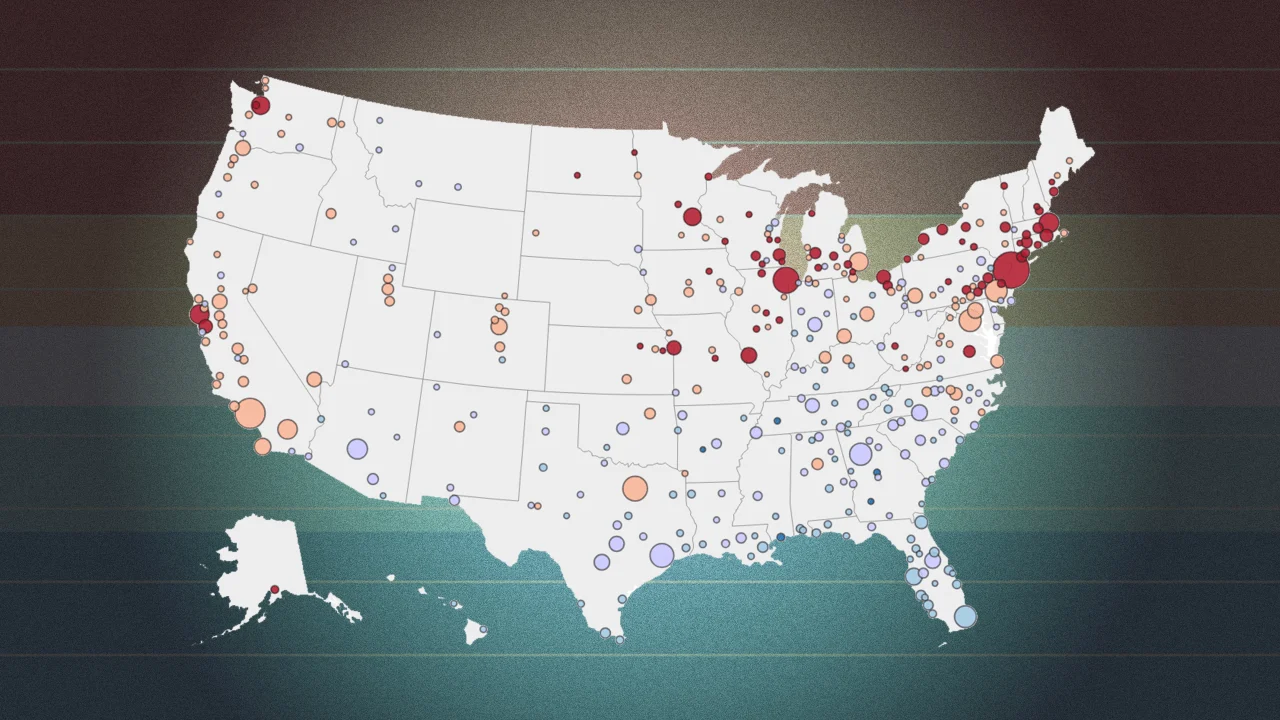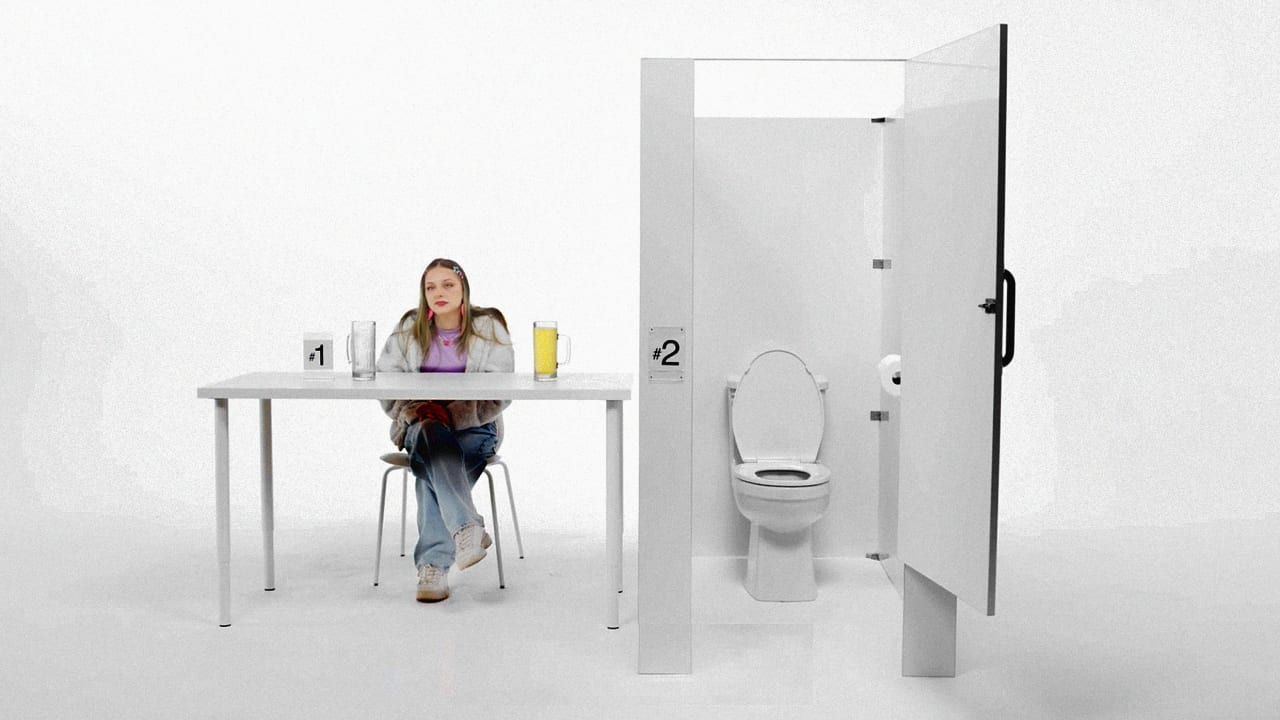Shopify’s user experience will soon ‘feel like sci-fi’
“Imagine an interface where you can quickly shift between talking, typing, clicking, and even drawing to instruct software, like moving around a whiteboard in a dynamic conversation,” Carl Rivera tells me. An experience in which users are not presented with a barrage of nested menus, but with a blank canvas that invites creativity aided by an artificial intelligence that knows everything there is to know about online and brick-and-mortar retail and marketing. A fluid interface that adapts and anticipates your needs, automating tasks and recommending actions like the most brilliant partner you could dream of.That’s a dream in itself, but it isn’t a fantasy; it’s Rivera’s future vision for Shopify. Rivera is the company’s new Chief Design Officer and he believes that, in the very near future, the e-commerce platform’s user experience is going to feel like sci-fi. Rivera joined Shopify through the 2018 acquisition of his startup TicTail. Right after that, he was key to launching Shop, the company’s consumer-facing business. His new position directly responds to industry skepticism about design’s relevance in an AI-driven landscape. In this time in which everyone is shifting to AI but almost nobody has a clear idea why, it makes sense that Shopify’s founder Tobi Lutke thought he needed someone like Rivera helming that leading position.“We’re entering a new technological paradigm with AI,” Rivera says, emphasizing that now, more than ever, it is strategic for Shopify to have a clear design vision about how to implement artificial intelligence in a truly empowering way for every company, from small retail shops to corporate giants. The company wants to reimagine its user experience, transforming it into a powerful tool for designers and business people that is easier to use and saves more time than ever before. “Half of the people are talking about design being dead because the programs can design for you,” he says. “We take quite the opposite point of view at Shopify.”Rivera believes that design’s importance has only intensified with AI. He recalls how in strategic meetings participants, despite active discussion about the future, “agreed but had different pictures in their head, different images of what that future they all discussed together looks like.” This lack of shared visualization, Rivera explains, is precisely where design’s power lies. “Put a designer into that conversation and start prototyping live as the conversation goes by, you start visualizing these different points of your imagination.” This process, he elaborates, enables participants to “align and start to kind of come on to the same version of the future.” He argues that when a designer begins to sketch ideas or build quick prototypes in real-time, abstract verbal agreements translate into concrete visual representations, forcing participants to confront and reconcile their differing mental models. [Image: Shopify]A Shopify UX revolution is brewingFor all of Shopify’s history, merchants confronted your typical dashboard: nested menus, a labyrinth of left-hand navigation bars spanning orders, products, customers, and analytics, and module-specific toolbars for inventory or marketing features. This hierarchical menu systems approach has defined the digital age, from Word to Photoshop. It requires users to memorize pathways. “The entire navigation of Shopify is revealed right when you come in,” Rivera says, because that’s how we have learned to navigate software.As Shopify’s capabilities expanded—adding banking services, global tax compliance, or AI analytics—this static approach strained usability. “It doesn’t at all seem to me that that is how you must be navigating software in the future,” Rivera says. Instead, he envisions interfaces where AI-driven progressive disclosure would surface tools contextually. Imagine a merchant discussing a “winter campaign” with Sidekick, he tells me, which prompts Shopify to generate just the relevant email templates and ad budget controls—bypassing the marketing module’s full menu structure. The user experience will morph and adapt to the needs of the user at any given time, a sci-fi dream come true. Rivera’s redesigned point-of-sale interface previews this philosophy: visuals stripped of clutter respond to retail workers needing full proficiency within “15 minutes of the first day,” as Rivera explains it. Future iterations could reduce that to seconds. “Very, very complex software will look extremely easy,” Rivera insists, because capabilities materialize only when essential—navigation bars dissolving into contextual prompts, settings menus summoned by voice, dashboards generated from conversations. The blank canvas replaces the control panel.[Image: courtesy Shopify]His vision for this simplified interaction centers on Sidekick, Shopify’s AI assistant. Previously, merchants might have asked Sidekick isolated questions like ‘What’s my best selling product in Germany?’ Now, the system handles complex, multi
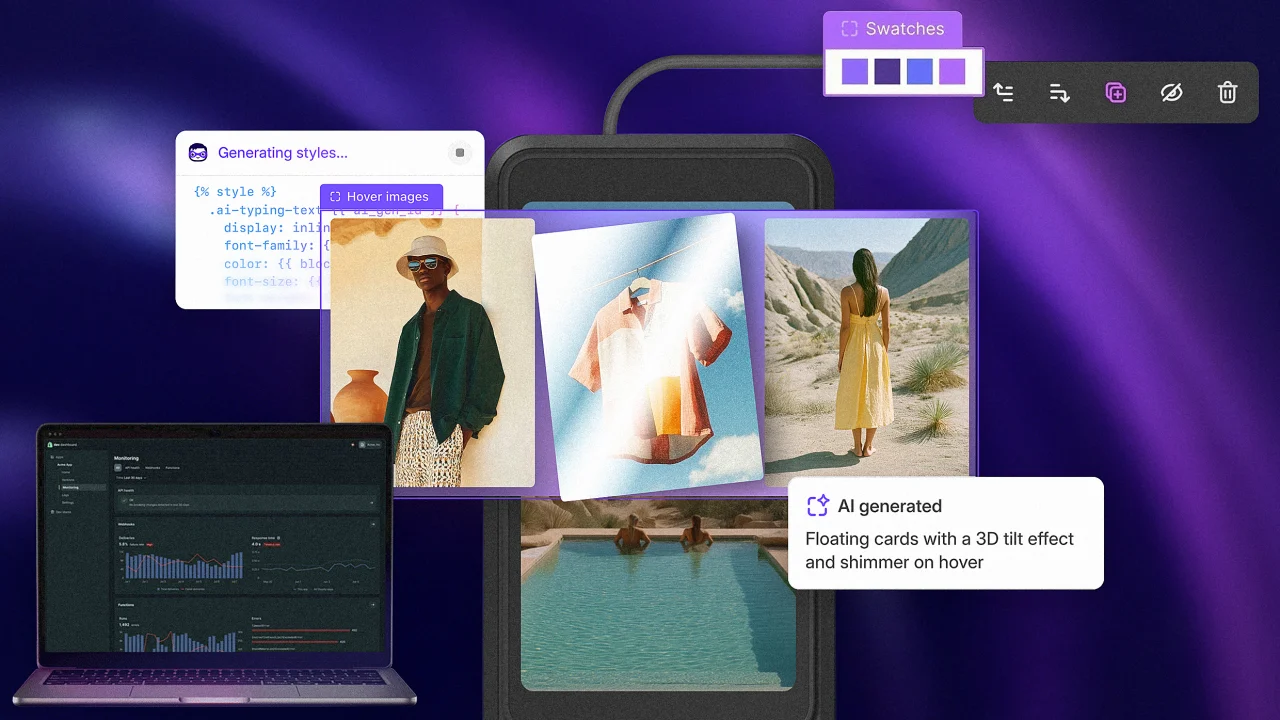
“Imagine an interface where you can quickly shift between talking, typing, clicking, and even drawing to instruct software, like moving around a whiteboard in a dynamic conversation,” Carl Rivera tells me. An experience in which users are not presented with a barrage of nested menus, but with a blank canvas that invites creativity aided by an artificial intelligence that knows everything there is to know about online and brick-and-mortar retail and marketing. A fluid interface that adapts and anticipates your needs, automating tasks and recommending actions like the most brilliant partner you could dream of.
That’s a dream in itself, but it isn’t a fantasy; it’s Rivera’s future vision for Shopify. Rivera is the company’s new Chief Design Officer and he believes that, in the very near future, the e-commerce platform’s user experience is going to feel like sci-fi.
Rivera joined Shopify through the 2018 acquisition of his startup TicTail. Right after that, he was key to launching Shop, the company’s consumer-facing business. His new position directly responds to industry skepticism about design’s relevance in an AI-driven landscape. In this time in which everyone is shifting to AI but almost nobody has a clear idea why, it makes sense that Shopify’s founder Tobi Lutke thought he needed someone like Rivera helming that leading position.
“We’re entering a new technological paradigm with AI,” Rivera says, emphasizing that now, more than ever, it is strategic for Shopify to have a clear design vision about how to implement artificial intelligence in a truly empowering way for every company, from small retail shops to corporate giants. The company wants to reimagine its user experience, transforming it into a powerful tool for designers and business people that is easier to use and saves more time than ever before. “Half of the people are talking about design being dead because the programs can design for you,” he says. “We take quite the opposite point of view at Shopify.”
Rivera believes that design’s importance has only intensified with AI. He recalls how in strategic meetings participants, despite active discussion about the future, “agreed but had different pictures in their head, different images of what that future they all discussed together looks like.” This lack of shared visualization, Rivera explains, is precisely where design’s power lies. “Put a designer into that conversation and start prototyping live as the conversation goes by, you start visualizing these different points of your imagination.” This process, he elaborates, enables participants to “align and start to kind of come on to the same version of the future.” He argues that when a designer begins to sketch ideas or build quick prototypes in real-time, abstract verbal agreements translate into concrete visual representations, forcing participants to confront and reconcile their differing mental models.
A Shopify UX revolution is brewing
For all of Shopify’s history, merchants confronted your typical dashboard: nested menus, a labyrinth of left-hand navigation bars spanning orders, products, customers, and analytics, and module-specific toolbars for inventory or marketing features. This hierarchical menu systems approach has defined the digital age, from Word to Photoshop. It requires users to memorize pathways. “The entire navigation of Shopify is revealed right when you come in,” Rivera says, because that’s how we have learned to navigate software.
As Shopify’s capabilities expanded—adding banking services, global tax compliance, or AI analytics—this static approach strained usability. “It doesn’t at all seem to me that that is how you must be navigating software in the future,” Rivera says. Instead, he envisions interfaces where AI-driven progressive disclosure would surface tools contextually. Imagine a merchant discussing a “winter campaign” with Sidekick, he tells me, which prompts Shopify to generate just the relevant email templates and ad budget controls—bypassing the marketing module’s full menu structure. The user experience will morph and adapt to the needs of the user at any given time, a sci-fi dream come true.
Rivera’s redesigned point-of-sale interface previews this philosophy: visuals stripped of clutter respond to retail workers needing full proficiency within “15 minutes of the first day,” as Rivera explains it. Future iterations could reduce that to seconds. “Very, very complex software will look extremely easy,” Rivera insists, because capabilities materialize only when essential—navigation bars dissolving into contextual prompts, settings menus summoned by voice, dashboards generated from conversations. The blank canvas replaces the control panel.
His vision for this simplified interaction centers on Sidekick, Shopify’s AI assistant. Previously, merchants might have asked Sidekick isolated questions like ‘What’s my best selling product in Germany?’ Now, the system handles complex, multi-step requests. A merchant can prompt, ‘Hey Sidekick, I’m thinking about a campaign for next winter, I want to target my top markets and I want to be selling my top products and I think it should be email and social media.’ Sidekick then shows its chain of thoughts by pulling together disparate pieces of information and creating a linked series of tasks that the user can observe in real time.
For instance, Sidekick would analyze sales data to identify ‘top markets’ and ‘top products,’ then leverage its understanding of marketing best practices to draft initial email copy and social media posts tailored to those products and regions. It might even suggest an optimal budget allocation based on historical campaign data, demonstrating why Rivera says “it’s becoming this really capable and active business partner.” Last year, Lutke described Sidekick as a Robin to merchants’ Batman—something ”that’s right there with you kind of working through the tasks.” It aims to become what everyone calls today agentic AI but focused exclusively on your business and your industry.
Though agentic AI still has a long way to go before it’s truly useful, Rivera says Sidekick’s strength is that it operates as an agentic AI “constrained to the context of Shopify.” Unlike a general purpose model, Sidekick performs actions within the Shopify admin on behalf of the merchant, and its context comes from Shopify’s proprietary data, not the open internet. And that’s a lot of data: an internal dataset, derived from millions of merchants. It allows Shopify to come up with the best business strategy to cater to each individual one of them and offer a marketing strategy. “We understand more. We have a better output of how businesses run their companies than any other company in the world.” For instance, a generic AI might offer general marketing advice, but Shopify’s AI can tailor recommendations based on actual e-commerce success patterns within its specific ecosystem, understanding granular details like how certain sneaker designs sell when it rains in Berlin, for example.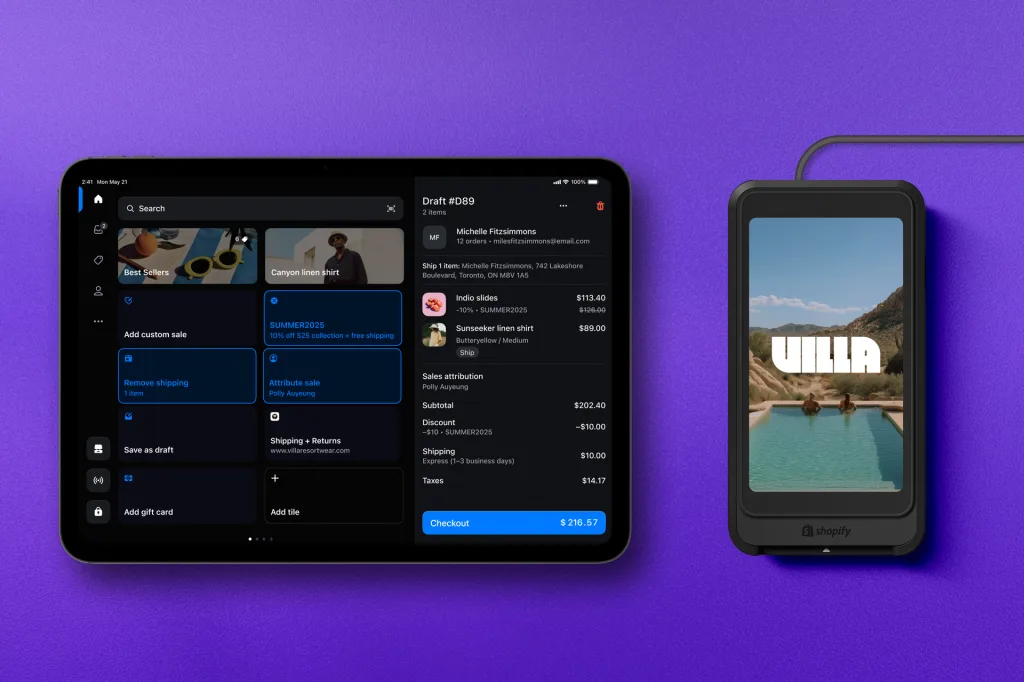
Rivera also talked to me about Shopify’s recently redesigned point-of-sale (POS) system as a proof of concept for this design philosophy. The overhaul focused on making the interface intuitive for hourly workers, who “need to understand entire software and how it works, you know, within 15 minutes of the first day at the job.” This presented a distinct design challenge compared to designing for the Shopify admin, where users are typically more accustomed to complex software. The solution involved simplifying complexity while maintaining the extensibility and specific configurations required for various retail environments. He points to the common complexities of a POS system—managing inventory, applying discounts, handling returns, processing multiple payment types—and how the new design strips away extraneous elements to make these operations intuitive for a novice user. “It looks gorgeous,” Rivera says enthusiastically.
The future of Shopify’s designers
The future of design work within Shopify, Rivera explains, will see designers shift from crafting individual interfaces to building foundational systems. He predicts that “engineers will be able to vibe code interfaces by describing them.” This means an engineer or product manager could generate a draft UI by simply putting it into words, for example: “I want to create an analytics page that shows me my email campaigns for Germany over this time period.” The AI would then generate an initial experience that “looks pretty good.” Designers, he clarifies, will then spend their efforts perfecting these reusable components by focusing on “building great design systems that that that AI can pull from.” 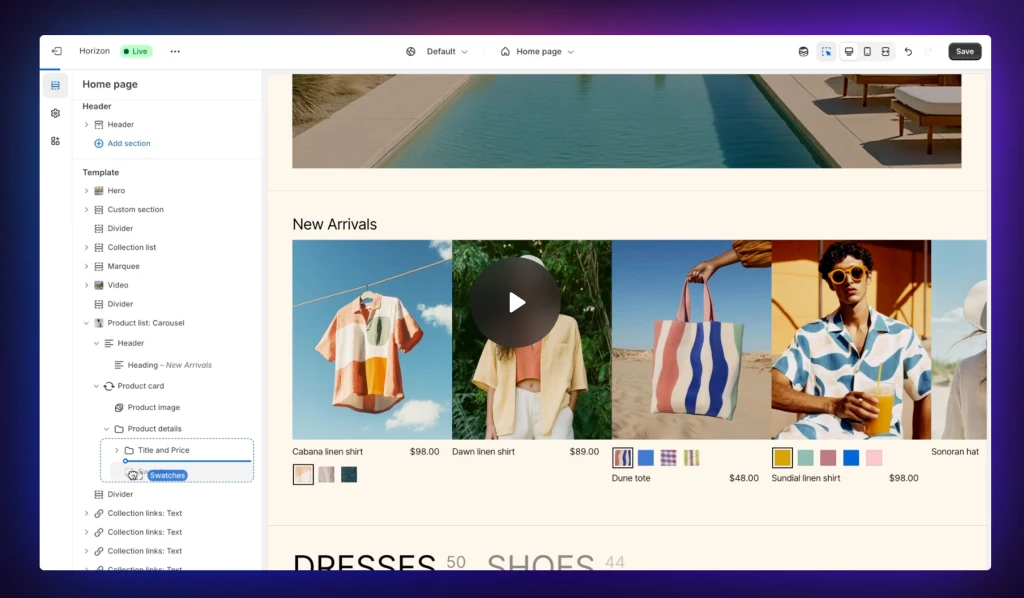
He tells me that they will spend much more time honing the details. “If you create a perfect form, if you create a perfect animation from one page to the next, it’s going to be able to be reused over and over and over again for every consumer that’s vibe coding a Shopify app or creating a Shopify experience in our team or amongst our partners,” he says. This demands meticulous system building, as Rivera emphasizes that “to create really great AI outputs, you need really amazing AI inputs.” This approach means designers will “spend more time on fewer things,” and dedicate their expertise to high-impact foundational elements that AI can then propagate across millions of stores.
The roadmap for this evolution will unfold through incremental updates. Sidekick’s current capabilities will expand into multimodal interactions. He envisions an interface where users can effortlessly shift between modalities. “It’s not just point and click. It’s not just chat. It’s not just voice. It’s all of them at once.” He suggests an environment similar to a meeting with a whiteboard, where one can “explain this to you using voice,” then “draw a rectangle and have an arrow,” and then “pull up my computer and show you something that is there on that side or whatever.” This means a fluid, open canvas where users can chat, talk, click, or draw to instruct the software.
Rivera anticipates a notable level of AI personalization in just a year. Drawing a parallel to hiring a business partner, Rivera envisions a future where merchants can participate in a “hiring process and choose which business partner you want to put into your admin and call it Sidekick.” This implies distinct AI agents with varying approaches, akin to how different human partners bring unique qualities to a business, perhaps a data-driven analyst persona or a more creative marketer persona.
But while that seems sudden, Rivera tells me that the revolution won’t come all at once. Progress will be cumulative. “I like the expression ‘overnight success, 10 years in the making,'” he says. He believes the change already started a year ago, when Shopify first launched Sidekick, and will continue with updates like a voice version. Eventually, he predicts, it will feel like the sudden market dominance of the iPhone, transforming “silly apps that like can’t do anything” into an intelligent interconnected system. “By the end of this year, we’ll have made a ton more progress,” he says. “And by the end of next year, we’ll be pretty science fiction-like.”










